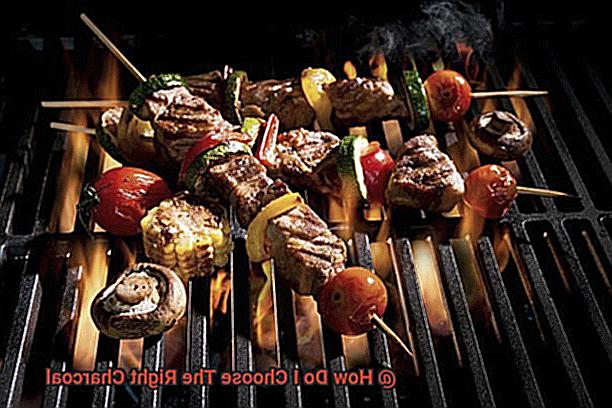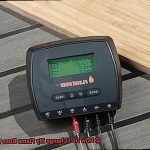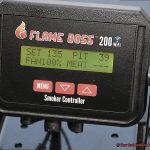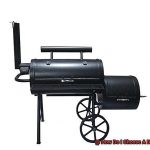Picture this: the tantalizing sizzle of a flawlessly seared steak, the intoxicating aroma of smoky barbeque swirling in the air. Ah, the joys of grilling. But here’s a little secret that separates the grilling gods from mere mortals – choosing the right charcoal.
Whether you’re a seasoned grill master or a newcomer yearning to ignite your passion for outdoor cooking, selecting the perfect charcoal can truly make or break your culinary creations. From the mesmerizing glow of briquettes to their mouthwatering smokiness, an array of options awaits – each with its own unique personality ready to elevate your grilling game.
In this blog post, we embark on an odyssey through the essential factors when it comes to picking that perfect charcoal for your grill. We’ll dissect different charcoal types, weigh their pros and cons, and equip you with expert tips to ensure an informed decision. So gather ’round your grills and prepare to unlock the secrets behind selecting the right charcoal – let’s dive in.
Contents
Types of Charcoal
When it comes to grilling, the type of charcoal you choose can make all the difference. From the natural smokiness of lump charcoal to the eco-friendly appeal of coconut shell charcoal, each type offers its own unique characteristics and benefits. Let’s dive into the sizzling world of charcoal and explore the various types that will take your grilling game to new heights.
Lump Charcoal:
Picture this: a crackling fire, dancing flames, and the tantalizing aroma of grilled goodness. That’s exactly what lump charcoal brings to the table. Made from natural hardwoods like oak or hickory, lump charcoal is pure carbon that burns hot and fast. It ignites quickly, providing instant heat for searing those perfect grill marks on your favorite cuts of meat. Plus, it’s known for its minimal ash production, ensuring a cleaner grilling experience.
Lump charcoal is prized for its natural composition and ability to impart a distinct smoky flavor to grilled food. Its irregular shapes and sizes create air gaps, allowing for better airflow and temperature control. This makes it ideal for both high-heat searing and low-and-slow cooking. As it burns cleanly, lump charcoal does not release any harmful chemicals or off-flavors that can taint your food.
Briquettes:
If consistency is key, then briquettes are your grilling best friend. These uniform-shaped charcoals are crafted by compressing charcoal dust and other ingredients like sawdust and binders. They burn longer and offer a more even heat distribution compared to lump charcoal. While they may produce more ash, they are affordable and readily available, making them a popular choice for backyard barbecues.
Briquettes are designed to be easy to use and provide a reliable heat source. They are often infused with additives like wood chips or spices to enhance the flavor profile of your grilled dishes. The uniformity of briquettes allows for consistent cooking temperatures, making them great for beginners or those who prefer a more controlled grilling experience. They also have a longer burn time, which is ideal for extended grilling sessions.
Coconut Shell Charcoal:
For those seeking sustainable options without compromising on flavor, look no further than coconut shell charcoal. Made from discarded coconut shells, this eco-friendly alternative burns hotter and longer than traditional charcoals. With its low smoke and ash production, you can focus on enjoying the delicious flavors of your grilled creations while also reducing your environmental impact.
Coconut shell charcoal is known for its clean-burning properties and the ability to infuse a mild, sweet flavor into grilled food. It is highly prized for its high heat intensity and longer burn time, making it ideal for slow cooking or smoking. The use of coconut shells as a raw material helps reduce waste and promotes sustainability in the grilling industry.
Quality of Charcoal
When it comes to achieving mouthwatering flavors and optimal cooking performance, choosing the right charcoal is essential. In this blog post, we will delve into the key factors to consider when assessing the quality of charcoal for grilling. By understanding these factors, you can make informed decisions and take your grilling game to new heights.
Source Matters:
The first step in selecting high-quality charcoal is understanding its source. Charcoal can be derived from various materials such as hardwood, coconut shells, or bamboo, each imparting its unique qualities to the charcoal. Hardwood charcoal delivers a rich smoky taste, while coconut charcoal burns hotter and longer. Consider your flavor preferences and cooking requirements when choosing the ideal source.
Size and Shape:
Consistent heat distribution and temperature control are crucial for successful grilling. Look for charcoal pieces that are uniform in size to ensure even cooking. Additionally, larger chunks of charcoal burn more slowly, providing sustained heat for extended grilling sessions.
Purity Matters:
To enjoy a pure grilling experience, opt for charcoal that is free from additives, fillers, or chemicals. These impurities can taint your food with unpleasant odors or flavors during grilling. Choosing all-natural, pure charcoal guarantees a clean and authentic taste.
Carbonization: The Secret to Perfect Charcoal:
Proper carbonization is key to achieving optimal charcoal performance. This process involves converting organic material into pure carbon through controlled heating in a low-oxygen environment. Fully carbonized charcoal ensures minimal moisture content, making it easier to light up and promoting even burning.
Certifications and Labels:
Look for certifications such as FSC (Forest Stewardship Council) or USDA Organic, which guarantee sustainable sourcing and adherence to environmental standards. These labels serve as a seal of quality, ensuring that your charcoal meets stringent criteria.
Seek Recommendations:
Tap into the experiences of other grillers and experts by exploring reviews and recommendations. Their insights can provide valuable guidance in choosing the right brand or type of charcoal based on performance, flavor, and overall quality.
Natural vs Flavored Charcoal
When it comes to grilling, the choice between natural and flavored charcoal can significantly impact the taste and quality of your food. Natural charcoal, made from pure hardwood, is free from additives, chemicals, or fillers. It is like grilling with nature’s own fuel. The process of creating natural charcoal involves burning wood in a low-oxygen environment, resulting in carbonized wood known as lump charcoal. This type of charcoal burns hotter and longer than its flavored counterpart, making it perfect for searing steaks or slow-smoking ribs.
Flavored charcoal, on the other hand, adds a burst of flavor to your grilled creations. Infused with additives like wood chips, herbs, spices, or fruit flavors, it aims to tantalize your taste buds. Imagine the smoky aroma of cherry-infused charcoal wafting through the air as you grill your favorite meat or veggies. Flavored charcoal allows for culinary experimentation and adds a unique twist to traditional grilling recipes.
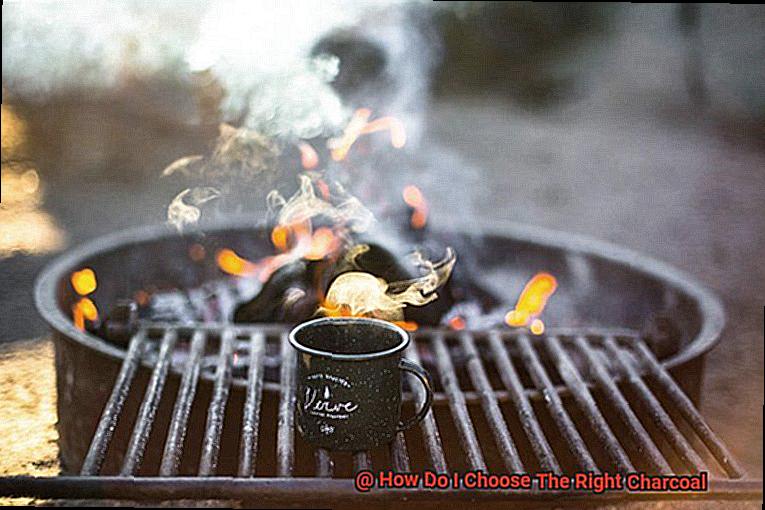
Natural charcoal takes the crown in terms of purity and authenticity. Made from pure hardwood, it ensures that no unwanted chemicals or additives interfere with the taste or quality of your food. Its high heat output and longer burn time make it a reliable choice for all your grilling needs.
On the other hand, flavored charcoal brings excitement to the grilling experience with its array of flavors. Whether you’re craving a hint of mesquite or a touch of hickory, flavored charcoal adds a new dimension to your dishes. However, it’s important to note that not all flavors may be consistent or strong enough to make a significant impact on the taste of your food.
Ultimately, the choice between natural and flavored charcoal comes down to personal preference and the type of food you’re grilling. If you’re a purist seeking a traditional grilling experience, natural charcoal is the way to go. But if you’re feeling adventurous and want to add a unique twist to your grilled creations, flavored charcoal is your ticket to flavor town.
Before firing up that grill, consider any concerns about additives in flavored charcoal. While most additives are considered safe for consumption, it’s wise to read the ingredient list and choose reputable brands that prioritize quality and safety.
Size of Charcoal
Are you ready to elevate your grilling game to new heights? Brace yourselves, because today we’re delving into the captivating world of charcoal and unraveling the mysteries behind selecting the ideal size to achieve tantalizing results.
When it comes to grilling, size is everything. Picture this: a succulent steak sizzling on the grill, but alas, the heat is inconsistent. It’s either scorching hot or disappointingly lukewarm, leaving you with an undercooked catastrophe or a dry, overcooked disaster. This is where the size of your charcoal comes into play.
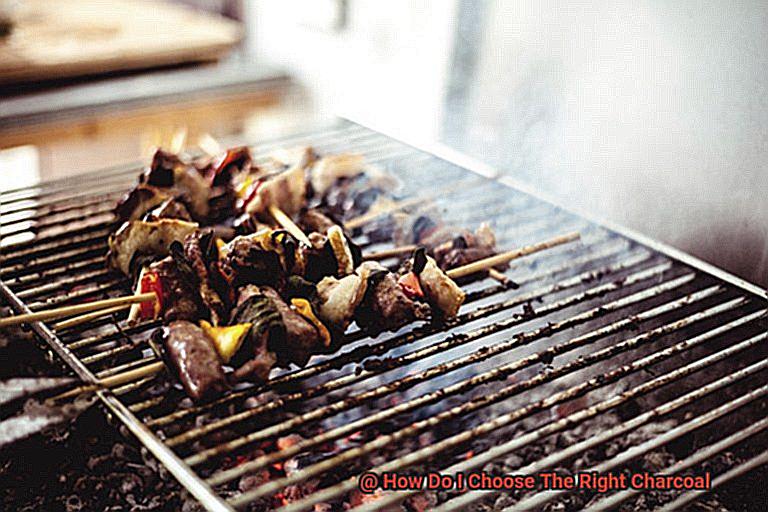
First things first, let’s talk cooking methods. If you’re planning a feast with a massive ribeye or a whole chicken taking center stage, larger charcoal pieces are your trusty companions. They provide a lengthier and more uniform heat source that ensures every mouthwatering morsel is cooked to perfection from edge to center.
But what if your culinary desires lean towards delicate veggies or delectable seafood? Fear not, for smaller charcoal pieces are your go-to option. They heat up swiftly and offer precise temperature control, safeguarding these tender delights from turning into charred ruins.
Now, let’s discuss duration. If you’re in for a marathon grilling session that stretches into the twilight hours, larger charcoal pieces will be your unwavering allies. They burn longer, meaning less time spent refueling and more cherished moments reveling in the company of loved ones around the grill.
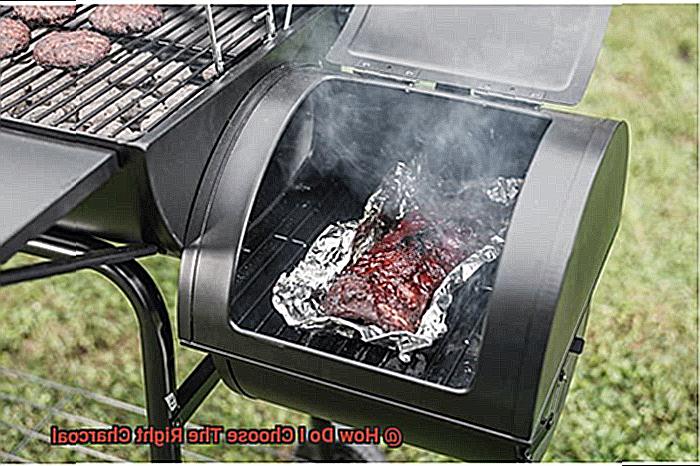
But wait, there’s more. The size of your charcoal also influences airflow within your grill. Smaller pieces encourage better circulation, resulting in efficient combustion and even distribution of heat across your cooking surface. Bid farewell to those irksome hot spots and greet a symphony of evenly cooked masterpieces.
Oh, and don’t forget. Some brands offer specialized briquettes tailored for low and slow cooking methods like smoking or barbecuing. These beauties boast a larger size and a protracted burning time, granting your culinary creations that delightful smoky touch we all crave.
Before you ignite the grill, take a moment to contemplate your unique needs and preferences. Experiment with different sizes of charcoal to discover your grilling sweet spot. Seek wisdom from seasoned grillers or consult product packaging for expert recommendations.
Grilling Needs and Preferences
Grilling enthusiasts know that the key to a mouthwatering barbecue lies in choosing the right charcoal. With two popular options available – briquettes and lump charcoal – it’s important to understand their differences in terms of grilling needs and preferences. Let’s dive into the world of charcoal and unlock the secrets to creating that perfect sear and smoky flavor.
Burn Time:
When it comes to burn time, briquettes and lump charcoal have distinct characteristics. Briquettes burn longer and more consistently, making them perfect for slow cooking and extended grilling sessions. On the other hand, lump charcoal burns hotter and faster, ideal for quick grilling and achieving a mouthwatering sear on steaks.
Flavor:
Flavor is a crucial aspect of grilling, and both briquettes and lump charcoal offer unique experiences. Briquettes, though some brands now offer smoky flavors similar to lump charcoal, traditionally may not impart as authentic a smoky taste. Lump charcoal, made solely from hardwood, provides an unmatched smoky flavor that grilling enthusiasts swear by.
Cost:
Budget-conscious grillers should consider the cost of charcoal. Briquettes are more affordable, making them a budget-friendly option for frequent grillers or those looking for good value for money. Lump charcoal, although pricier due to its pure hardwood composition, offers superior flavor and performance for those willing to invest.
Ease of Use:
Ease of use is essential for an enjoyable grilling experience. Briquettes are easy to light, maintain a consistent temperature, and produce less ash for hassle-free grilling. Lump charcoal requires more effort to ignite and may need attention during grilling for even heat distribution. However, many argue that the extra effort pays off with superior flavor.
Briquettes vs Lump Charcoal
When it comes to grilling and smoking, the debate between briquettes and lump charcoal can really heat up. Each option has its own unique advantages, so let’s dive in and compare the benefits of each.
Convenience is a key factor to consider. Briquettes take the lead in this category, as they are uniform in size and shape. This makes them easy to light and control the temperature. On the other hand, lump charcoal comes in irregular shapes and sizes, which may require a bit more effort to light and maintain a consistent temperature.
Burn time is another critical aspect. Briquettes have a longer burn time compared to lump charcoal. This makes them ideal for those long, slow cooking sessions that require patience and precision. If you’re planning on smoking some succulent ribs or a mouthwatering brisket, briquettes are your best bet. However, if you’re looking to sear some steaks or cook at high temperatures to achieve that perfect charred crust, lump charcoal burns hotter and faster.
Now let’s talk about flavor, which is where things get interesting. Briquettes often produce more ash compared to lump charcoal, requiring more frequent cleaning of your grill or smoker. However, some grillers argue that briquettes have a more neutral flavor profile, allowing the natural flavors of your food to shine through. On the other hand, lump charcoal imparts a more distinct smoky flavor that many grillers prefer.
Cost and availability are also worth considering. Briquettes are generally cheaper and more readily available compared to lump charcoal, making them a popular choice for budget-conscious grillers.
Hardwoods vs Softwoods
When it comes to grilling, the choice of charcoal can make or break your culinary masterpiece. Hardwood and softwood charcoal are two popular options, each with its own unique characteristics.
In this article, we’ll explore the differences between the two and how they can impact your grilling experience.
Hardwoods: Slow and Steady Wins the Race
Derived from trees like oak, hickory, maple, and cherry, hardwood charcoal boasts a dense and compact structure. This means it burns longer, providing a steady heat for slow-cooking methods like smoking or indirect grilling.
With its higher carbon content, hardwood charcoal delivers a hotter burn with less smoke. So, if you’re planning to grill those succulent cuts of meat or dishes that require a longer cooking time, hardwood charcoal is your go-to option.
Softwoods: Quick and Smoky Delights
On the other hand, softwood charcoal comes from evergreen trees such as pine, fir, and spruce. It ignites quickly and offers a high-temperature burn, making it perfect for quick-cooking foods like burgers, hotdogs, or vegetables. Softwood charcoal may have a shorter burn time compared to hardwoods, so keep that in mind for extended grilling sessions.
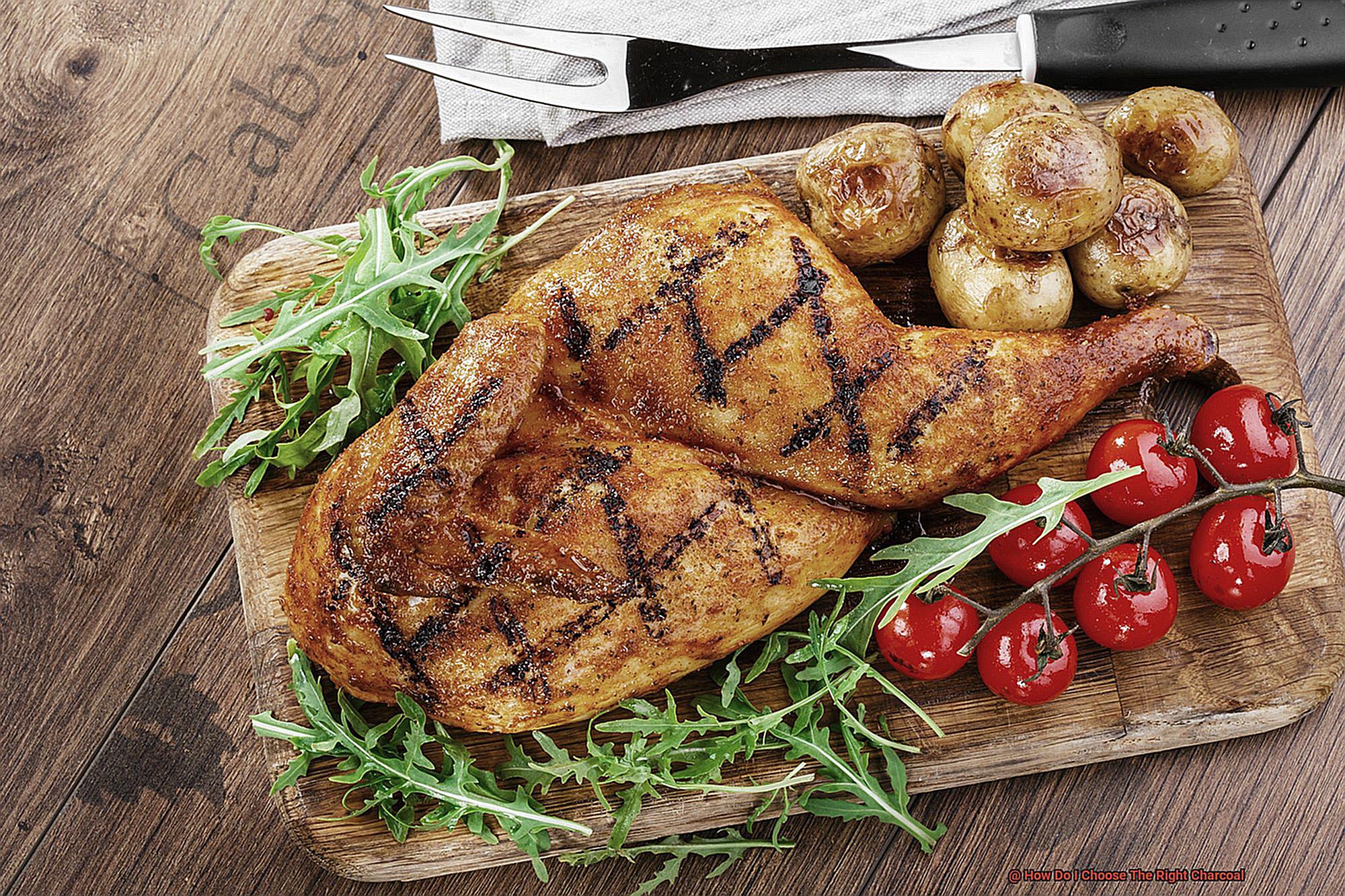
Additionally, softwood charcoal produces more smoke which imparts a distinct and smoky flavor to your grilled creations.
Choosing the Right Flavor Profile:
The choice between hardwood and softwood charcoal also depends on the flavor profile you desire for your grilled dishes. Hardwood charcoal allows the natural flavors of your food to shine through since it produces less smoke.
On the other hand, softwood charcoal adds that extra smoky kick that many grill enthusiasts love. Consider your personal preferences and the specific flavors you want to achieve when deciding between the two.
Availability and Cost Considerations:
When it comes to availability, hardwood charcoal is generally more readily accessible since hardwood trees are more common in many regions. Softwood charcoal may be harder to find depending on your location. In terms of cost, hardwood charcoal is usually priced higher due to its longer burn time and higher quality, while softwood charcoal tends to be more affordable. Keep this in mind when planning your grilling budget.
Carbonization for Clean Burn and Minimal Smoke/Ash
Grilling is an art, and like any artist, you need the right tools to create a masterpiece. In the world of grilling, charcoal is your brush, and carbonization is the technique that brings your grilling creations to life. To achieve a clean burn and minimal smoke/ash, it’s essential to understand the power of carbonization and how it can elevate your grilling experience. In this article, we delve into the intricacies of carbonization and provide expert tips on choosing the best charcoal for your next cookout.
Carbonization: The Key to a Clean Burn
Carbonization is a transformative process that elevates ordinary wood to the ranks of exceptional charcoal. By heating organic material like wood in a controlled environment, impurities and moisture are removed, leaving behind carbon-rich charcoal. This meticulous process ensures a clean burn by eliminating volatile compounds that would otherwise produce excessive smoke and ash.
Slow Carbonization for Quality Charcoal
When it comes to selecting charcoal, slow carbonization is the gold standard. This method involves subjecting wood to gentle heat over an extended period, allowing impurities to be gradually expelled. Charcoal produced through slow carbonization burns more efficiently and produces significantly less smoke compared to its fast-carbonized counterparts. By opting for slow-carbonized charcoal, you’re setting the stage for a cleaner grilling experience.
Wood Type Matters
The type of wood used for carbonization impacts not only the flavor but also the burn characteristics of the resulting charcoal. Hardwoods like oak, hickory, or mesquite reign supreme in the grilling world due to their dense nature and longer burn times. These hardwood charcoals produce less smoke and ash compared to softwoods like pine or spruce. Whether you prefer a bold smoky flavor or a milder taste profile, choosing the right wood type is crucial for achieving optimal grilling results.
Size and Shape: Igniting the Fire Within
The size and shape of charcoal briquettes can make or break your grilling experience. Smaller, uniform chunks of charcoal ignite quickly and evenly, providing a consistent heat source throughout the cooking process. Irregularly shaped or excessively large pieces may require more time to light and can result in uneven cooking. By opting for consistently sized charcoal briquettes, you ensure a seamless grilling adventure from start to finish.
Say No to Additives
To truly embrace the essence of clean grilling, it’s vital to steer clear of charcoal brands that incorporate additives or fillers. While these additions may promise improved burning properties, they often lead to increased smoke and ash production. By choosing all-natural, additive-free charcoal, you guarantee a cleaner burn with minimal smoke and ash. Look for keywords like “all-natural” or “additive-free” on the packaging to make an informed and conscientious choice.
9LS9LBaycyQ” >
Conclusion
When it comes to choosing the right charcoal, there are a few key factors to consider. Firstly, think about your grilling needs. Are you looking for a charcoal that burns quickly and hot for searing steaks? Or do you prefer a longer burning charcoal for slow-cooked ribs? Understanding your specific grilling style will help you narrow down your options.
Next, consider the type of charcoal. There are two main types: lump charcoal and briquettes. Lump charcoal is made from natural hardwood and burns hotter and faster than briquettes. It also produces less ash, giving you a cleaner grilling experience. On the other hand, briquettes are made from compressed sawdust and other additives. They burn more consistently and last longer, making them ideal for low-and-slow cooking.
Another important factor to consider is the quality of the charcoal. Look for brands that use high-quality materials and have a good reputation among grillers. Cheaper charcoals may contain fillers or chemicals that can affect the taste of your food.
Lastly, don’t forget about sustainability. If eco-friendliness is important to you, opt for charcoals made from renewable resources or those labeled as “natural” or “organic.”
In conclusion, choosing the right charcoal involves considering your grilling needs, understanding the different types available, checking the quality of the product, and being mindful of sustainability practices.

